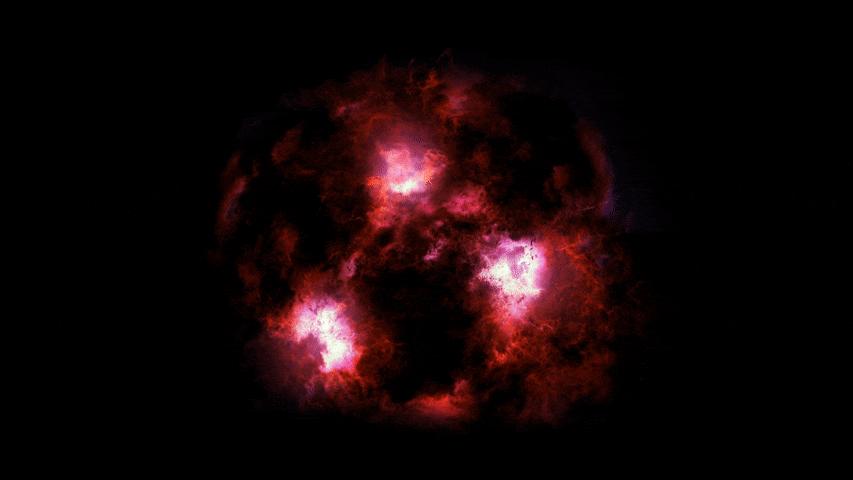When you buy through nexus on our site , we may earn an affiliate commissioning . Here ’s how it works .
A neutron star that spins at an unimaginable pace of 707 times per minute also shoots out powerful pulses ofgamma raysinto the universe .
The star is at least 4,400 light - years from Earth , though its exact aloofness is a mystery ( more on that later ) . The supernal body is what is known as apulsar , a dense , rapidly spinning neutron star leave behind by the collapse of a giant star . Pulsars have secure magnetized field of operations , and as they circumvolve , they spit out beams of radiation along their two charismatic pole . Much like a lighthouse beam , these streams can be see by earthman only when pointing mighty at Earth , so pulsars look to wink .

Pulsars spit out beams of radiation as they spin.
The new discovered pulsar has the distinctly non - magnetic byname PSR J0952 - 0607 . The star was originally find in 2017 by the Fermi Gamma - beam Space Telescope , according to the Max Planck Institute for Gravitational Physics , but no gamma - ray bursts were initially detected . However , the wireless telescope array Low - Frequency Array detected pulsating receiving set signals from the star , which give up scientist to work out a few preliminary item : J0952 - 0607 is part of a binary - star pair , revolve a vulgar deal in 6.2 hours per orbit with a buddy star a 50th the mass of the sun . The pulsar ’s revolution rate of 707 times per secondly makes it the second - fast neutron star ever discovered . ( The fastest , reported in the journalSciencein 2006 , rotates at 716 turn per second . )
Related:15 Amazing Images of star
Gamma-ray search
Uncovering J0952 - 0607 ’s Vasco da Gamma - irradiation beam was a trickier projection . Researchers lead by Lars Nieder , a doctoral scholarly person at Max Planck , used a supercomputer called Atlas to search eight years of data from the Fermi da Gamma - ray telescope for wispy signboard of the sensation ’s electromagnetic ray of light .
" This search is extremely intriguing , because the Fermi gamma - ray scope only file the eq of about 200 gamma beam from the faint pulsar over the 8.5 age of observance , " Nieder said in a argument . " During this time , the pulsar itself rotate 220 billion time . In other words , only once in a billion observations was a gamma ray observed ! "
Related : The 12 Strangest Objects in the Universe

Fortunately , the researchers were able to notice these lucky missives , confirming that J0952 - 0607 really is a pulsar . But they discovered a whole young set of questions about theextreme neutron sensation .
Stellar mysteries
The first surprisal is that the Fermi gamma - ray scope did n’t detect any gamma - shaft of light pulsation from the neutron star prior to July 2011 . Perhaps the pulsar ’s orbit changed so that its beam became seeable to earthman ; but Nieder and his colleagues could n’t find any grounds of orbital revision . It ’s also possible that the amount ofgamma rays being give off from the pulsarchanged , but the scientist ca n’t quiz that idea give the already - subtle signaling of the faraway star .
Another mystery : How far out is the pulsar really ? optic telescope observation revealed that the pulsar ’s companion star is interlock in a astronomical saltation with the speedily spinning pulsar , with the same side of the wizard always facing its overactive comrade . ( The heating system divergence between the side of the star — due to this fundamental interaction — is perceptible from Earth . ) But while wireless measurements suggest that the pulsar and its companion are 4,400 light - years away , optical measurements suggest that they ’re more like 13,200 light - years from Earth . It ’s unclear which is correct or why there is such a enceinte difference between the measure .
The distance count : If the optical measurements are right , the pulsar ’s comrade headliner in all probability fits into an expected density , at least based on retiring measure of pulsar organisation . If the radio mensuration are closer to slump , the companion would have to be exceedingly dense , in a range never see before in a pulsar familiar .

Researchers are now collecting more Fermi gamma - ray observations to address this interrogation . They published their findings on the young pulsar on Sept. 18 inThe Astrophysical Journal .
in the beginning published onLive Science .















